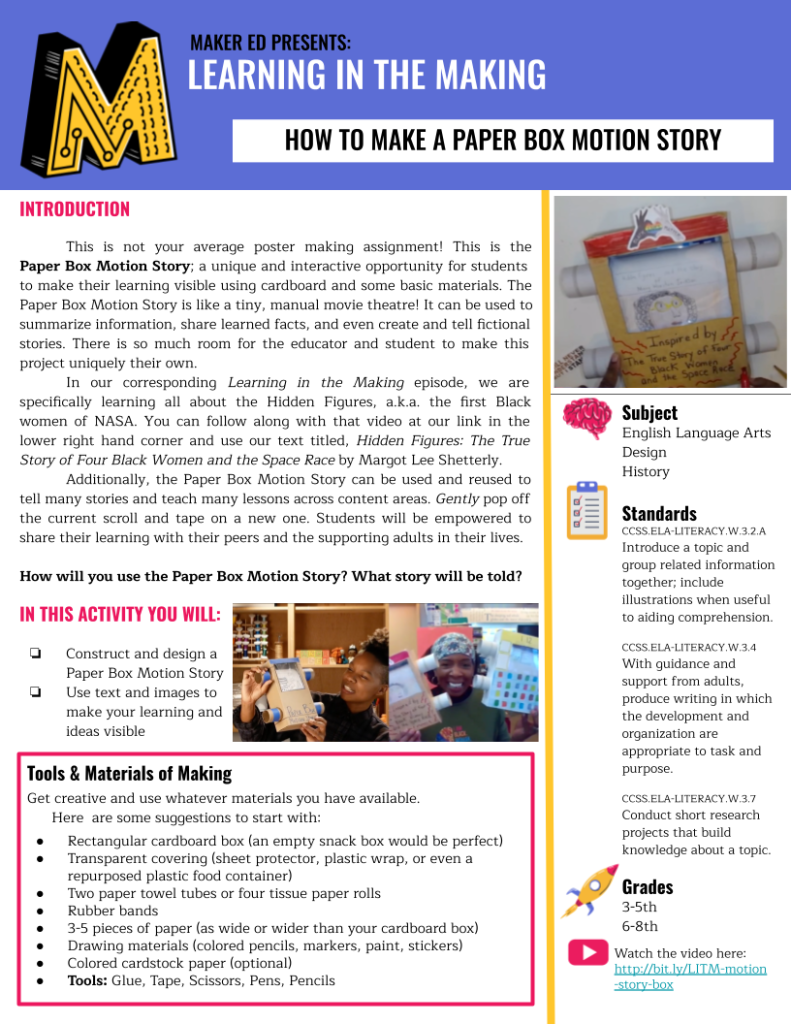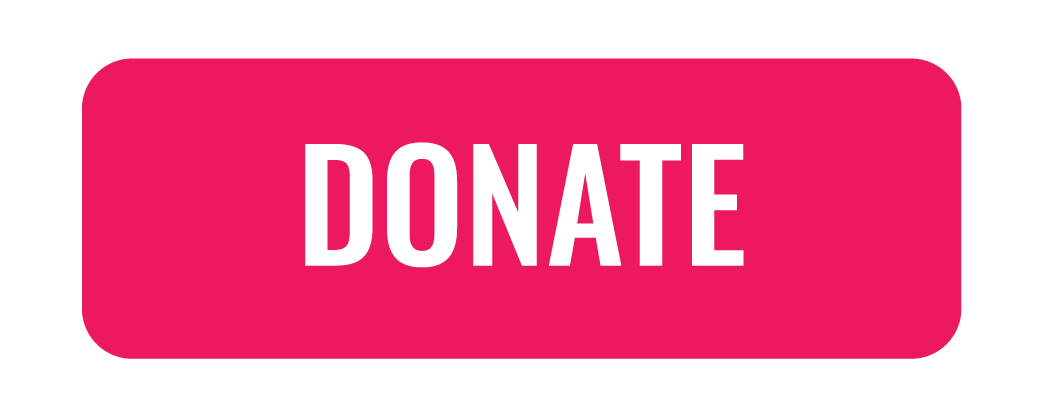This is not your average poster-making assignment! This is the Paper Box Motion Story; a unique and interactive opportunity for students to make their learning visible using cardboard and some basic materials. The Paper Box Motion Story is like a tiny, manual movie theatre! It can be used to summarize information, share learned facts, and even create and tell fictional stories. There is so much room for the educator and student to make this project uniquely their own.
In our corresponding Learning in the Making episode, we are specifically learning all about the Hidden Figures, a.k.a. the first Black women of NASA. You can follow along with that video at our link in the lower right hand corner and use our text titled, Hidden Figures: The True Story of Four Black Women and the Space Race by Margot Lee Shetterly.
Additionally, the Paper Box Motion Story can be used and reused to tell many stories and teach many lessons across content areas. Gently pop off the current scroll and tape on a new one. Students will be empowered to share their learning with their peers and the supporting adults in their lives.
How will you use the Paper Box Motion Story? What story will be told? Make with us using the video below as a guide:
To make your own Paper Box Motion Story, you will need:
- Rectangular cardboard box (an empty snack box would be perfect)
- Transparent covering (sheet protector, plastic wrap, or even a repurposed plastic food container)
- Two paper towel tubes or four tissue paper rolls
- Rubber bands
- 3-5 pieces of paper (as wide or wider than your cardboard box)
- Drawing materials (colored pencils, markers, paint, stickers)
- Colored cardstock paper (optional)
- Tools: Glue, Tape, Scissors, Pens, Pencils
We want to see your projects! After the livestream, we encourage you to post your projects on Twitter or Instagram. Tag us @MakerEdOrg with #MakerEdAtHome #PaperBoxMotionStory
Learning in the Making: LIVE! is an online video series designed to support educators and families with accessible hands-on learning experiences. This work is part of our focus on supporting remote learning in various environments. (To learn more, read this blog post about our work during shelter-in-place measures in 2020.)
Every other week, we post a new making activity on our YouTube channel and share related resources on our blog.
We are so excited to support hands-on learning as educators, caregivers, and young learners shift to distance learning, and we need your support! Donate today so we can keep going.




